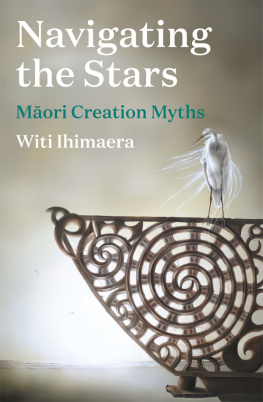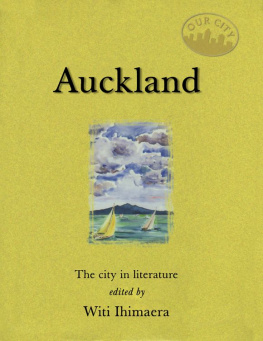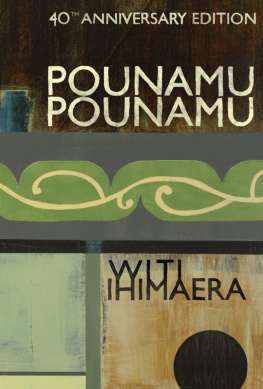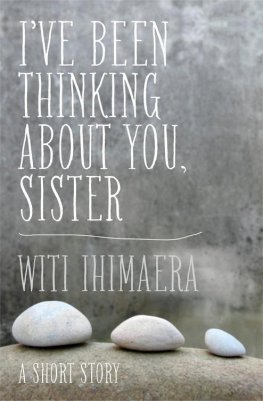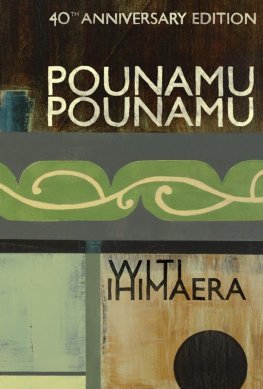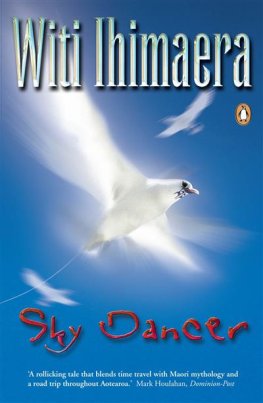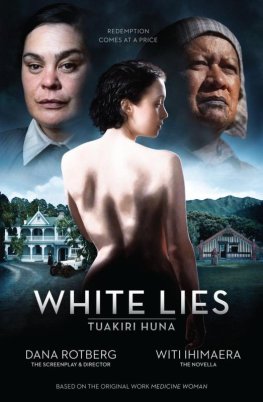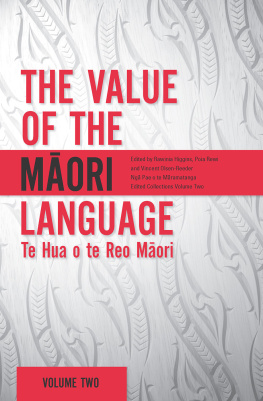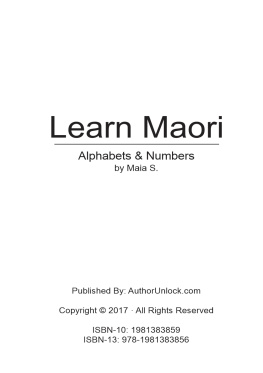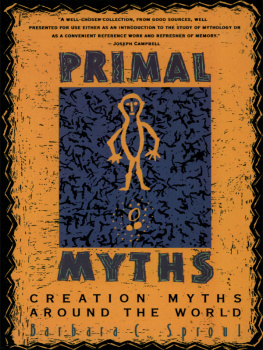Ihimaera - Navigating the Stars: Maori Creation Myths
Here you can read online Ihimaera - Navigating the Stars: Maori Creation Myths full text of the book (entire story) in english for free. Download pdf and epub, get meaning, cover and reviews about this ebook. year: 2013, publisher: Penguin Random House New Zealand, genre: Religion. Description of the work, (preface) as well as reviews are available. Best literature library LitArk.com created for fans of good reading and offers a wide selection of genres:
Romance novel
Science fiction
Adventure
Detective
Science
History
Home and family
Prose
Art
Politics
Computer
Non-fiction
Religion
Business
Children
Humor
Choose a favorite category and find really read worthwhile books. Enjoy immersion in the world of imagination, feel the emotions of the characters or learn something new for yourself, make an fascinating discovery.
Navigating the Stars: Maori Creation Myths: summary, description and annotation
We offer to read an annotation, description, summary or preface (depends on what the author of the book "Navigating the Stars: Maori Creation Myths" wrote himself). If you haven't found the necessary information about the book — write in the comments, we will try to find it.
Navigating the Stars: Maori Creation Myths — read online for free the complete book (whole text) full work
Below is the text of the book, divided by pages. System saving the place of the last page read, allows you to conveniently read the book "Navigating the Stars: Maori Creation Myths" online for free, without having to search again every time where you left off. Put a bookmark, and you can go to the page where you finished reading at any time.
Font size:
Interval:
Bookmark:


From master storyteller Witi Ihimaera, a spellbinding and provocative retelling of traditional Mori myths for the twenty-first century.
In this milestone volume, Ihimaera traces the history of the Mori people through their creation myths. He follows Twhaki up the vines into the firmament, Hine-ttama down into the land of the dead, Mui to the ends of the earth, and the giants and trehu who sailed across the ocean to our shores From Hawaiki to Aotearoa, the ancient navigators brought their myths, while looking to the stars bright with gods, ancestors and stories to guide the way.
Step through the gateway now to stories that are as relevant today as they ever were.
Cover: From the spirit world, the rare ktuku signals the arrival of legendary Polynesian navigator Kupe to the shores of Aotearoa after an immense oceanic journey (artwork & caption by Sofia Minson from newzealandartwork.com).
Part pages: Yes, thats it! Te Haa would say. Te trino haere whakamua, whakamuri. At the same time as the spiral is going out, it is coming in. At the same time that it is going forward, it is returning, yes, yes! The spiral galaxy Messier 100 in the constellation Coma Berenices, taken by the Hubble Space Telescope (M 100, NASA, ESA/Hubble, potw1850a).
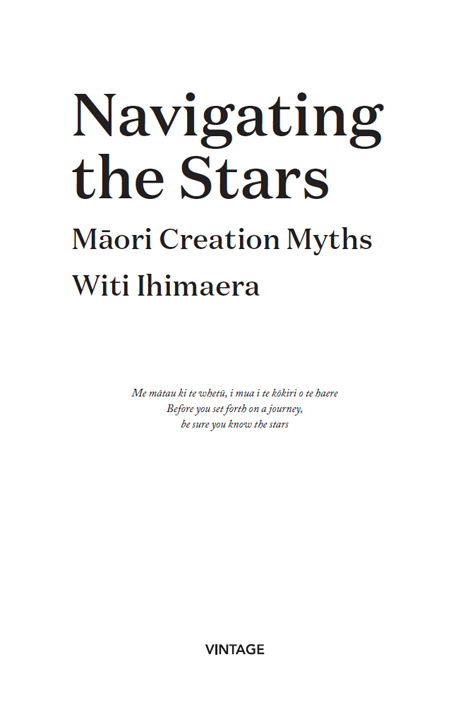
For Aoterangi, Mohi Te Ata Hikoia, Te Rangi Hroa, Hre Hongi, Harawira Huriwai, Pei Te Hurinui Jones, K-k-t-rau, Pita Kpiti, Hukiki Te Ahu Karamu, Te Kahui Kararehe, Rweti Kohere, Aritaku Maaka, Hikawera Mahupuku, Makereti, Hoani Matiu, Rpoama Meihana, Tiaki Mitira, Nahe, Ngakuru, Tamati Manuhiri Ngapora, T pirana Ngata, Keeti Ngtai, Nuku of Ng Mahanga, Tiwai Paraone, Wiremu Paratene Okawhare, Hamiora Pio, Hariata Pitini-Mrera, Npia Phh, Wi Pkk, Mui Pomare, Hnare Ptae, Rewi Rangimio, Rangiuia of Te Aitanga-a-Hauiti, Hori Ropiha, Mohi Ruatapu, Riki Te Mairaki Taiaroa, Paitini Tapeka of Maungapohatu, Takanui Tarakawa, Hone Mohi Twhai, Tare Wtere Te Kahu of Kai Tahu, Hetaraka Tautahi, Hukika Te Ahukaramu, Te Kohuora, Te Kohuwai of Rongoroa, Rwiri Te Kokau, Tare Te Maiharoa, Hnare Te Maire, Rawiri Te Maire, Moihi Te Mtorohanga, Keiti Ngtai, Te Kkau Te Piki Ktuku, Mokena Romio, Te Rangikheke, Pahoro Te Tio, Mohi Trei, Te Kooti rikirangi Te Truki, Riwai Te Kukutai, Te Wanikau, Hoani Te Whatahoro Jury, Te Whiwhi, Rihari Tauwhare, Teone Taare Tikao, Tikitu, Matiaha Tiramrehu, Rihari Tohii, Paraire Tomoana, Tnuiarangi of Wairarapa, Mohi Trei, Uremutu, Tamarau Waiari of Ngti Koura, Ntanahira Waruwarut, Wi Pere Halbert, Ihaka Whaanga and Tutere Wirepa.
Also Teuira Henry of Tahiti, S.M. Kamakau of Hawaii, Te Ariki Taare and Tamuera Te Rei of Rarotonga, Iseraela Tama of Aitutaki and other informants of Hawaiki who worked with the early ethnographers.
They were among the first known tohunga-historians and storytellers.
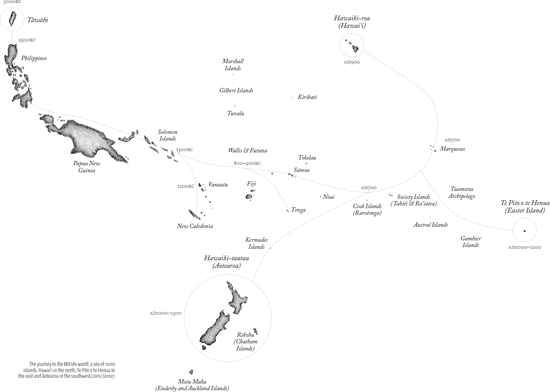
KARAKIA
Takitakina te waka!
Launch the canoe!
Ka tere, h h ka tere te waka
It floats, h h the canoe floats
Ka tere n tai
Floated by the tide
Waiho kia kau ana!
Leave it to swim!
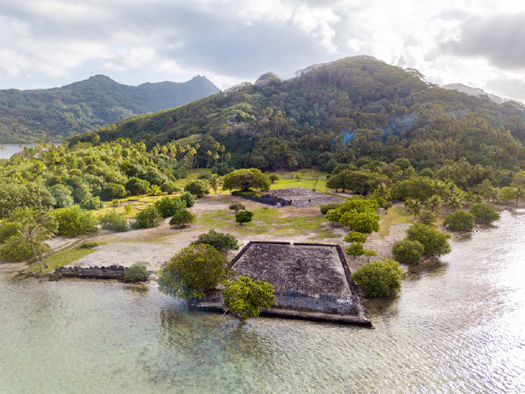
Raitea, French Polynesia. The island at the axis of space and time. Taputapu-tea marae lies in the foreground overlooking the lagoon (Dmitry Maloy, iStock).

I haere mai ttou i tawhiti
We come from far away
Once upon a time, several million years ago, a mitochondrial mother lived in what is now known as Africa. There were other beginnings before her, but let us call her the original Eve. She was the mother of mothers, and from her arose the children of humankind, generation after generation. Our story begins with them.
Myths commemorate our ancestors and origins
It started with the incredible saga of nomadic hunter-gatherers. They foraged their way across great distances and through the Stone Age. They fashioned simple implements and inscribed the events of their lives in images on the walls and ceilings of the caves they lived in. Outside, the skies above would have seemed vast and brimming with possibilities, the stars offering a means of orientation and, perhaps, the idea of something more magical.
It wasnt sufficient just to live their lives, and humankind therefore began to ask themselves how, what, by whom, when and why. So began a particular compulsion to ask questions concerning their existence, to explain and understand it.
Humankinds subsequent development can be traced through the Old World names of the periods in which many ceased their patterns of roving. In the Neolithic Age literally the new stone age, which followed the Palaeolithic or old stone age they started to settle, to domesticate animals and to bond together as tribal groups. During the successive Copper, Bronze and Iron ages, they forged metal implements and created civilisations with unique cultures and kin loyalties. Large cities were built, such as Jericho, Byblos and Uruk.
Myths became integral to the human story, carried by the strong pulse of primal storytelling. Stars were charted and used both to tell the time and to foretell the future. Monuments were built to act as calendars, at first in wood and later in stone. The something more magical evolved into something more profound: systems involving negotiations with pantheons of gods who would praise or blame and who always required obedience. Humankind began to engrave their relationships with the divine on palaces, temple walls and stelae.
Their gods were competitive, and so were they, shaping not just tools but also weapons and chariots. There are remains of early massacres carried out with stone blades and wooden arrows, such as at Jebel Sahaba from 12,00015,000 years ago, but with metal came much wider destruction. Sumer in southern Mesopotamia home to many warring settlements was conquered by the legendary Sargon of Akkad, while the early Pharaohs fought over Upper and Lower Egypt.
Myths tell of great battles, of tragic losses and triumphant victories
The emergence of city-states led to increasing sophistication as larger alliances based on nation, language, race, religion and common beliefs were formed. Astronomers calculated the motion of the planets, while philosophers theorised over the phenomenon. As far as myth was concerned, bards attached stories to constellations and priests described how they were imbued with divinity. Thus, for the Greeks, Helios was the sun god, Selene the goddess of the moon, Zeus god of the sky and ruler of the heavens; and the known planets were each ascribed a god. In the Norse pantheon, Odin rode across the sky on his winged eight-legged horse, Sleipnir. Ahura Mazda was a god of light in Persia, fighting against Ahriman, the spirit of darkness, who controlled a three-headed demon known as Azi Dahaka.
Font size:
Interval:
Bookmark:
Similar books «Navigating the Stars: Maori Creation Myths»
Look at similar books to Navigating the Stars: Maori Creation Myths. We have selected literature similar in name and meaning in the hope of providing readers with more options to find new, interesting, not yet read works.
Discussion, reviews of the book Navigating the Stars: Maori Creation Myths and just readers' own opinions. Leave your comments, write what you think about the work, its meaning or the main characters. Specify what exactly you liked and what you didn't like, and why you think so.

